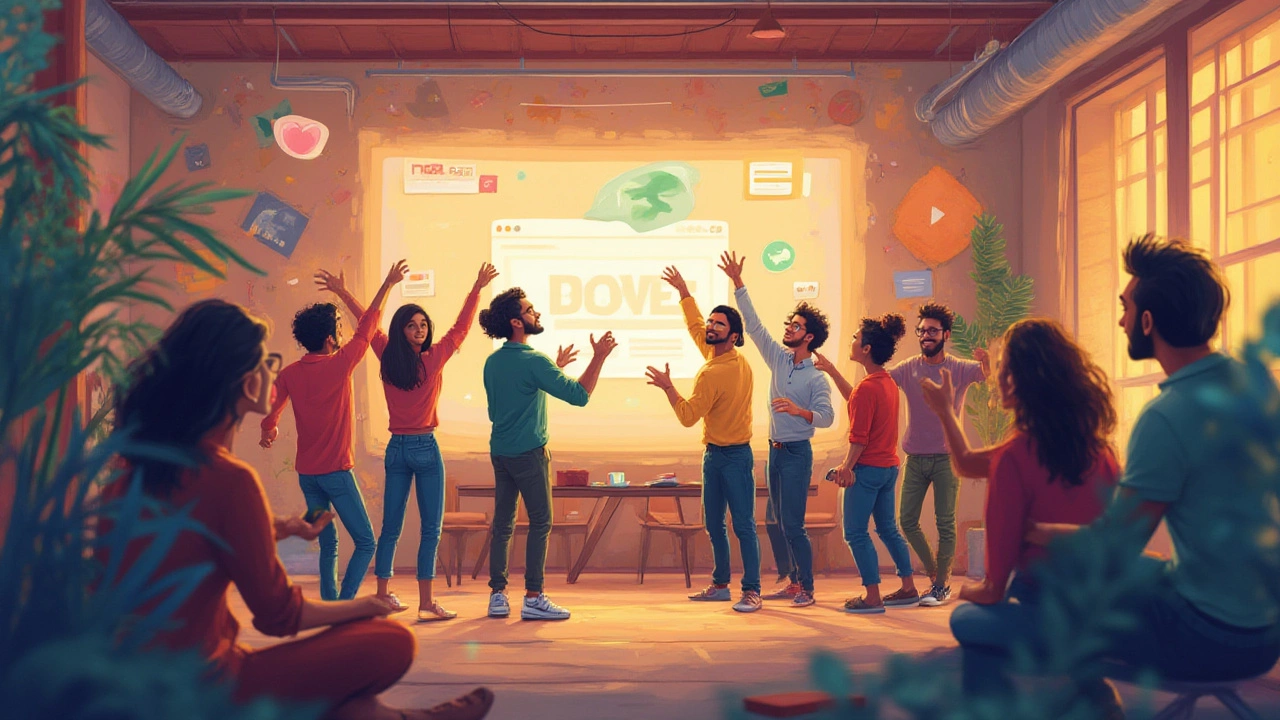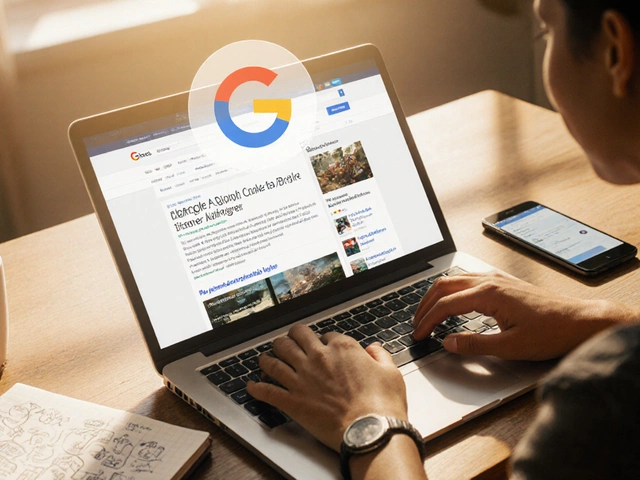You know that feeling when you find out your friend started a website in an afternoon without paying a single rupee, dollar, or euro? It almost sounds too good to be true—kind of like those 'get rich quick' schemes. But here’s the twist: it’s actually real. Anyone in 2025 who thinks you have to shell out cash to make a website is in for a surprise. Sure, people used to pay web designers a small fortune just for a basic page. These days, it’s a different story. Free website creation isn’t some secret reserved for techies—it’s open to everyone, no experience needed. Whether you want to set up a portfolio, showcase your side hustle, or just dump your random thoughts on a blog, the tools are at your fingertips (literally, on your phone or laptop). Let’s pull back the curtain and see how anyone—yes, that means you—can make a website for free, and what catches might be lurking behind the word "free."
The Reality of Free Website Platforms
So here’s something not everyone wants to say out loud: totally free websites do exist, but they come with trade-offs. Most of the big-name platforms out there—think Wix, WordPress.com, Weebly, and Google Sites—have a free plan. Each has its quirks. For example, Wix and Weebly give you slick drag-and-drop editors. WordPress.com feels like a blog on steroids. Google Sites? It’s so easy your grandma could use it, but you won’t win any design awards.
Main catch? You get a branded subdomain like yoursite.wixsite.com (not as cool as yoursite.com). They’ll slap on their logo somewhere. Sometimes you’ll run into ads—those come with the territory. You won’t have total control over plugins and code. Need e-commerce or booking extras? Free plans might limit those. You’ll also hit storage or bandwidth ceilings if your site goes viral (hey, it could happen).
But don’t underestimate how far you can go for free. According to a 2024 survey by WebsiteToolTester, about 35% of new websites each year started with a free platform. Surprised? It’s a no-brainer for students, hobby bloggers, coaches, small charities, or freelancers who want a portfolio online by the end of the day.
If you’re worried about security or downtime, the big free platforms run millions of sites—they’re way more reliable than some bargain shared hosting you find through a random search. Google Sites, for example, boasts a whopping 99.9% uptime due to running on the same servers as Google Drive and Gmail. Security updates happen automatically. Plus, their designs have improved a LOT since the clunky templates of the early 2010s.
| Platform | Free Plan Features | Main Limitations |
|---|---|---|
| Wix | Drag-and-drop, free templates | Wix ad, yoursite.wixsite.com |
| WordPress.com | Easy blog setup, basic themes | WordPress ad, no plugins on free |
| Weebly | Simple builder, contact forms | Ads, subdomain only |
| Google Sites | No ads, integrates with Google Drive | Basic design, no custom code |
Hidden Costs and Limitations: What You Won’t Get For Free
Here’s the honest bit: free websites really are free to start—but only up to a point. You’re not giving up money at first, but you are trading off some freedom.
The number one limitation? That subdomain. Instead of something short and memorable, your website link looks like a mouthful. Most people who want to look "serious" end up paying for a custom domain (usually ₹800 to ₹1,500 per year, or $10 to $15 USD). If you want your site to show up well in search engines or use email addresses like [email protected], the free plans won’t cut it. Basic, yes. Professional, not so much.
Next up is storage and bandwidth. Free plans cap your storage, sometimes just 500MB or less, and limit how many visitors your site can handle before it slows down, or, worse, goes offline temporarily. If you’re putting up a massive photo gallery or a set of downloads, those limits get hit fast.
Then there’s the ads. Wix and Weebly stick their logo in a prominent spot. WordPress.com shoves sponsored posts. Google Sites skips the ads, but your features are more bare-bones.
The other hidden cost is time. Free plans only give you the essential features. Anything else—e-commerce, extra templates, analytics, advanced SEO tools—sits behind a paywall. Want to sell stuff directly from your site? On Wix, you need to upgrade. Same goes for most others. Even just uploading a custom font or plugin might require a paid tier.
Here’s a bit of trivia: In 2023, WordPress.com had over 6 million new sites started on its free plan, but nearly half of those switched to a paid plan within 18 months for more control. That tells you something: free is a great way to start and learn, but most people outgrow the limits.
Finally, remember you don’t "own" your website in the purest sense. If the platform changes its rules or shuts you down (rare, but it happens), you might lose your work. Paid hosting or self-hosted WordPress gives you more freedom to move your site or back it up. On a free plan, you’re at their mercy.

Step-by-Step: How to Launch Your Free Website From Scratch
Time for the fun part. Whether you’re feeling brave or just curious, here’s a step-by-step breakdown:
- Pick your platform. If you want blog-style features, try WordPress.com. For portfolios or projects, Wix and Weebly have visuals covered. Google Sites is golden for simplicity.
- Sign up for a free account. You’ll only need your email to start on these major platforms. No card details, no trials that sneak up with surprise billing.
- Choose a template/theme. Most platforms give you dozens of options, so scroll until one catches your eye.
- Use the drag-and-drop builder (or classic editor). Add text for your introduction, services, contact, gallery, or blog posts—whatever your goal is. These editors really are beginner-proof; just click and type.
- Upload your images and logo. Most free plans let you do this. Stuck with stock images? Platforms like Wix and Weebly come with built-in image libraries free for use.
- Publish your site. This usually takes one click. You can then share your free site link (on yoursite.wixsite.com or similar) via WhatsApp, X, Instagram, wherever your people are.
- Want more customization? Tweak colors, fonts, layouts—test as much as you want.
Pro tip: Google yourself after your site goes live. Unless you upgrade, your free site won’t show near the top for most search results in the first few months. If you need Google presence, focus on good titles and descriptions, and link to your site from social profiles.
You can add new pages (like About, Blog, Services) as your project grows. And, if you stick with it? Upgrading to a paid plan later lets you bring your content and design with you, so no work is wasted.
Need inspiration? Check out free sites made with these platforms—look up the Wix, Weebly, or WordPress free site showcases for surprisingly slick designs that didn’t cost a thing.
Free vs. Paid Websites: When Should You Make the Switch?
There’s no shame in starting free, but at some point you’ll hit the classic upgrade dilemma—kind of like switching from freeloading on Netflix to getting your own account. When does it make sense to pay?
- Need a custom domain to look professional or boost branding
- Ready for real business features: e-commerce, booking, custom forms
- Want to remove ads for a cleaner look
- Desire better SEO for your project or brand
- Outgrowing storage, needing more bandwidth
- Want customer support instead of help forums
Late 2024 saw a surge in freelancers and small businesses upgrading after getting their “big break” or going viral. For example, Wix reported a 28% spike in paid conversions during the festival season, as creators wanted their own branded sites for selling art, cakes, handmade jewelry, you name it.
Need some actual numbers? Here’s a comparison:
| Plan Type | Wix | WordPress.com | Weebly |
|---|---|---|---|
| Free | 0/year | 0/year | 0/year |
| Basic Paid | $16/month (domain, no ads) | $4/month (domain, no ads) | $10/month (domain, no ads) |
Instead of splurging from day one, test out the platform for free, see if you actually like it, and then pay if you need to. Remember, many people never upgrade. If your site is mainly for portfolio, event details, or a side hobby, the free plan’s limits might never matter to you.

Tips to Get the Most Out of Your Free Website
Alright, you’re set up. Now, squeeze every drop of value from that zero-cost setup:
- Choose a short, memorable username for your subdomain. Shorter is sweeter and easier to share.
- Use free design tools (like Canva) for a custom logo and banners—upload those to stand out from other cookie-cutter free sites.
- Add "About" and "Contact" pages, even if you’re anonymous. People trust sites with real people behind them.
- Fill in SEO settings: page title, description, and alt text for images. Yes, even free sites have these options tucked in the settings.
- Link your site in your WhatsApp bio, LinkedIn, Instagram profile, and anywhere you hang out online.
- If you need extras—like an Instagram feed—look for built-in tools or simple embeds instead of hunting paid plugins.
- Back up critical content (just copy-paste to a text file or Google Doc) in case the platform ever glitches.
- Publish fresh content often—a basic blog, news updates, recent work—Google crawls and ranks active sites faster, even the free ones.
One little-known fact: Many free website builders allow you to export your data or site content, so if you do choose to upgrade or switch to a new platform, your hard work doesn’t vanish. WordPress.com, for example, offers this via a free XML export tool.
Getting honest feedback is gold. Share your link with friends, family, or on Reddit—they’ll spot typos or clunky layouts you miss. Treat your free site as a sandbox. Learn, play, experiment, and see what clicks. If you get obsessed (and many people do), investing in a domain or better tools is just a bonus, not a necessity.
Today, pretty much anyone can make a website for free—sometimes in way less time than it takes to finish your coffee. All you need is an idea, wifi, and the willingness to click “Publish.” The web isn’t just for corporations and coders anymore. Your turn to join the creators.



